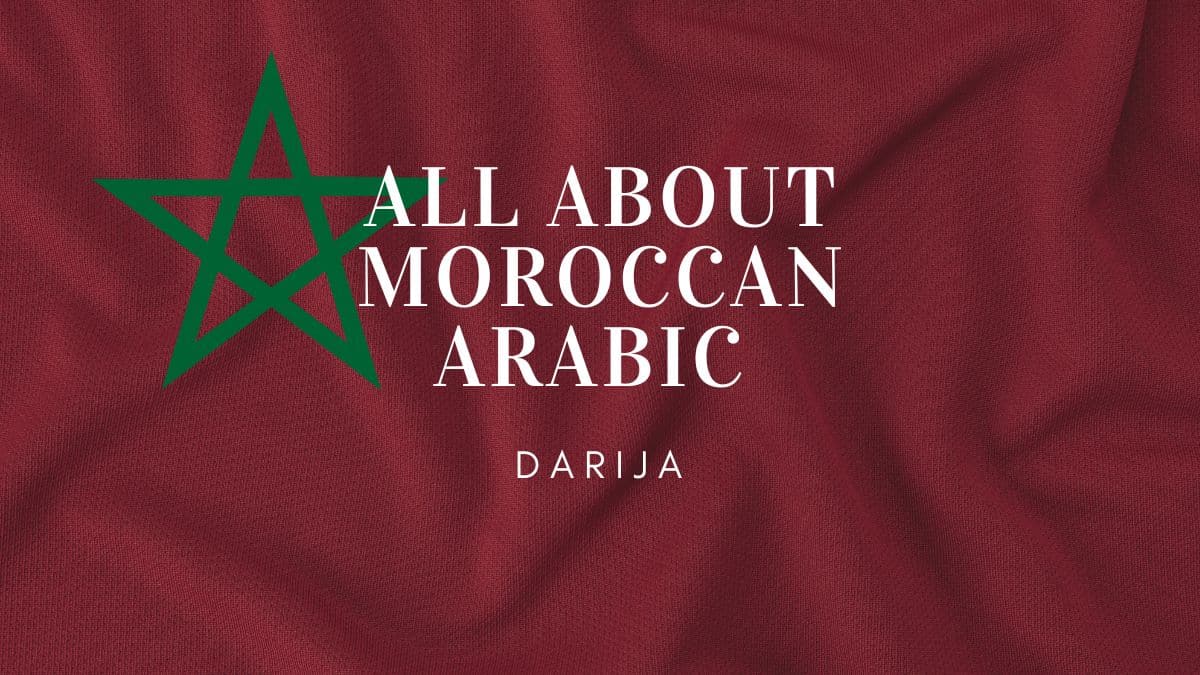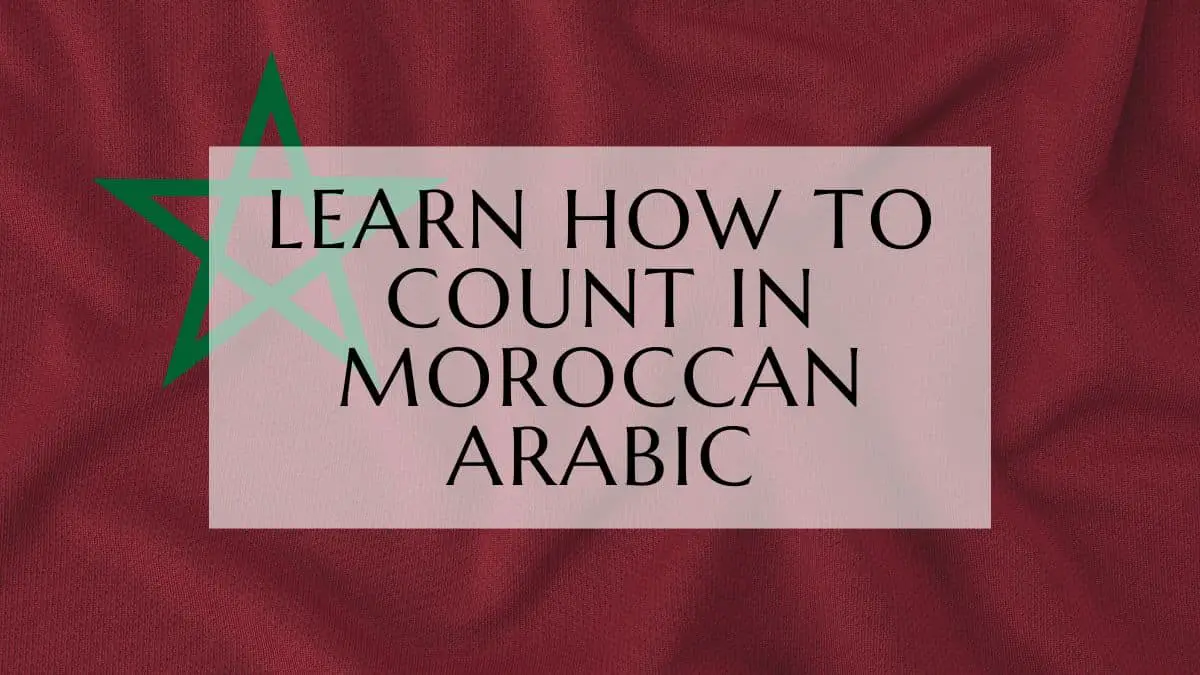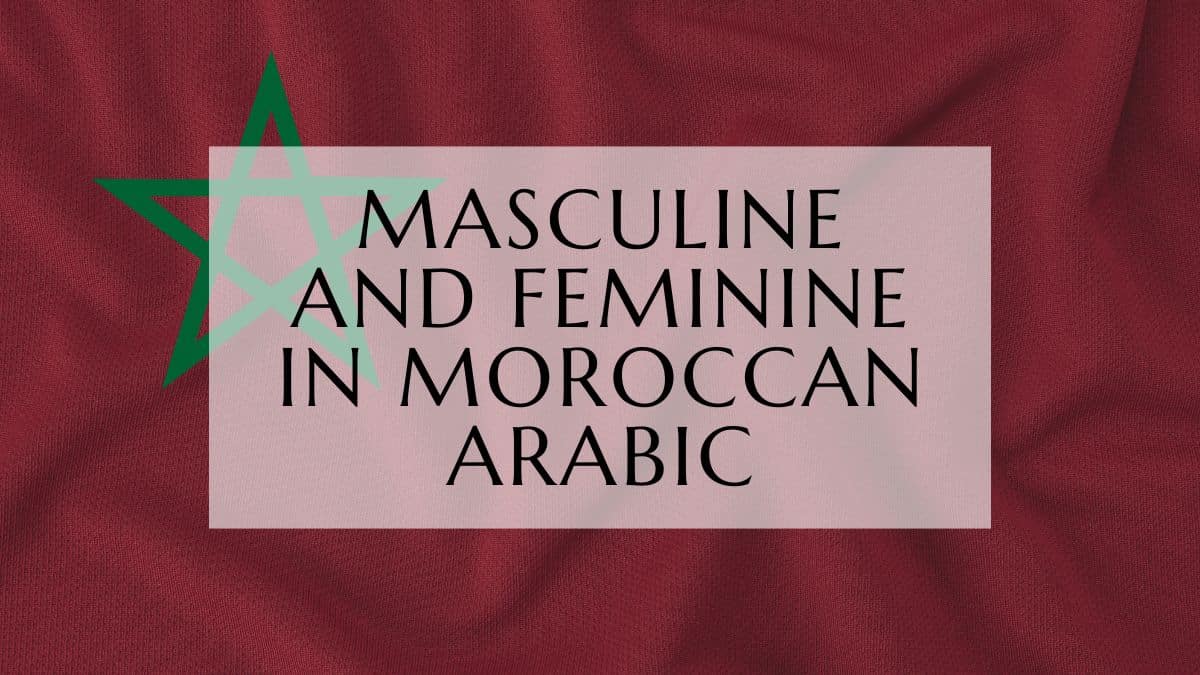Introduction:
Darija, a linguistic treasure nestled in the heart of North Africa, is more than a dialect – it’s a living testament to the region’s diverse cultural history. In this article, we will talk about the history of Moroccan Arabic, its evolution, and where to learn it. Let’s get started!
Key takeaways:
- Cultural Essence: Darija, explored beyond language, is unveiled as a cultural heartbeat, intertwining with daily life and traditions.
- Historical Evolution: Originating from medieval North Africa, Darija’s linguistic journey showcases adaptability and resilience over centuries, influenced by diverse cultures.
- Media Stardom: Darija shines in the media, becoming a captivating cultural ambassador in films, music, and television, showcasing the richness of Arabic diversity.
- Lingualid Learning: Lingualid is spotlighted as an accessible tool, offering beginners clear lessons, interactive exercises, and a Memrise audio course for an enjoyable Darija learning experience.
What Is Darija
Darija, often referred to as Moroccan Arabic, is a distinctive Arabic dialect spoken primarily in Morocco and parts of North Africa. Imagine it as the cool, laid-back cousin of standard Arabic. While standard Arabic is formal and used in writing and official contexts, Darija is the language of everyday conversations, vibrant marketplaces, and the streets. It’s the voice of the people, reflecting a blend of Arabic with influences from Amazigh, French, and Spanish, creating a linguistic mosaic that sets it apart.
Historical Background: Origins of Darija
Alright, time-travelers, buckle up as we delve into the historical wonderland that birthed Darija. Imagine stepping into a bustling bazaar in medieval North Africa—this is where the story begins.
Centuries ago, as traders, poets, and everyday folks engaged in lively conversations, a distinctive form of Arabic began to emerge. This wasn’t your textbook Arabic; it was the raw, unfiltered language of the people. Darija, in its infancy, was the result of this lively linguistic exchange.
The roots of Darija can be traced back to the dynamic crossroads of cultures and civilizations. It’s like a linguistic melting pot, blending Arabic with influences from Amazigh, French, and Spanish, depending on the region. Picture it as a linguistic spice rack where each ingredient adds a unique flavor to the dialect.
As trade routes flourished and empires rose and fell, Darija evolved. It became the language of the streets, the markets, and the everyday interactions of people. Unlike formal Arabic, Darija was the language of the common folk—a vibrant tapestry woven with words, expressions, and nuances passed down through generations.
Over time, Moroccan Arabic adapted to the ebb and flow of history. It weathered the influences of various conquerors and rulers, absorbing new words and expressions like a linguistic sponge. It’s a testament to the resilience of language, a living artifact that encapsulates the stories of those who spoke it.
So, when we explore the historical background of Moroccan Arabic, we’re not just looking at words on a page. We’re unraveling a rich tapestry of cultural exchanges, historical twists, and the ever-changing landscape of the Arabic-speaking world. Darija isn’t just a dialect; it’s a living chronicle of the people who shaped it and continue to breathe life into its vibrant linguistic legacy.
Is Moroccan Arabic a mix?
Absolutely! Moroccan Arabic, or Darija, proudly wears its multicultural influences. It is a linguistic fusion, a delicious blend of Arabic, Amazigh, French, and Spanish. Each linguistic ingredient contributes to the unique flavor of Darija, making it a captivating mix of words and expressions. The result of centuries of cultural exchange, trade, and historical interactions has left an indelible mark on the language. So, when learning Moroccan Arabic, you’re not just learning a dialect; you’re immersing yourself in a linguistic tapestry woven with the threads of diverse cultures.
Related: The Beginner’s Guide To Learn Moroccan Arabic
Is Darija hard to learn?
Now, the burning question: Is learning Darija a linguistic mountain to climb? Well, fear not! While it has its quirks and unique expressions, Moroccan Arabic is known for its approachable, down-to-earth vibe. It’s like learning the local slang in a new city—it might take a bit of practice, but once you get the hang of it, you’ll feel like a local. With online resources, language courses, and the immersive experience of practicing with native speakers, diving into Darija can be an exciting and rewarding linguistic adventure.
Learn Darija With Lingualid: Your Gateway to Mastering Moroccan Arabic!
Learning Moroccan Arabic doesn’t have to break the bank. Begin your learning journey for free today at Lingualid.com. Our platform provides extensive lessons, interactive exercises, and a Memrise-supported course (ideal for flash card enthusiasts) to support you in acquiring this valuable skill. Seize this opportunity to learn at no cost and unlock the door to a new language proficiency.
So, why settle for ordinary when you can learn Darija with Lingualid?
Dive in, and let the journey begin!
Darija and Tourism
Attracting Language Enthusiasts
Darija, with its unique charm, attracts language enthusiasts from around the globe. Uncover the experiences of travelers immersing themselves in the linguistic and cultural wonders of Darija-speaking regions.
Cultural Tourism Impact
Beyond language, Moroccan Arabic plays a significant role in cultural tourism. Its influence extends beyond linguistic borders, shaping how travelers engage with and appreciate diverse cultures.
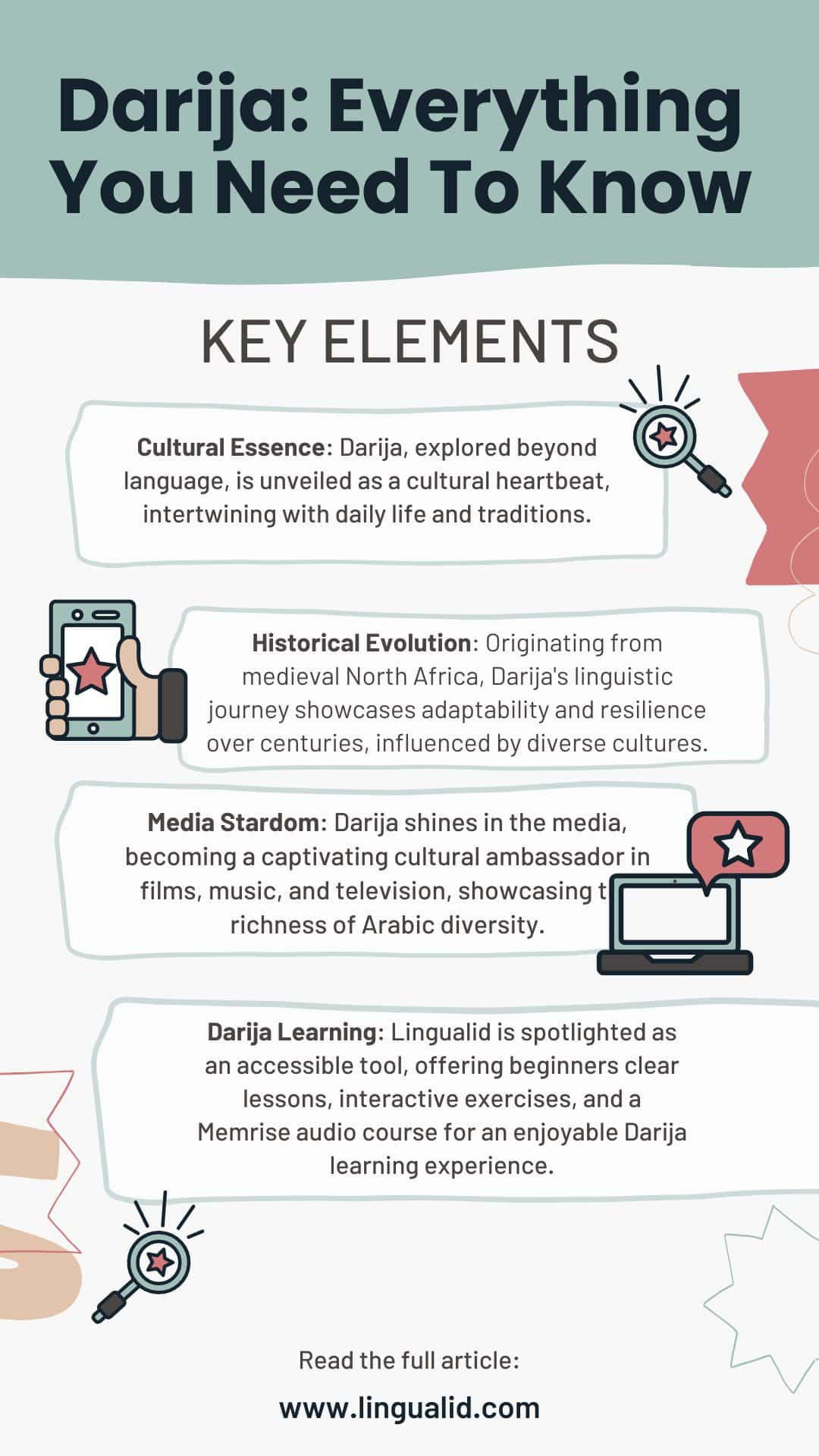
Conclusion
In conclusion, Darija stands as a testament to the resilience of language in the face of cultural shifts and global influences. Its rich history, diverse expressions, and contemporary relevance make Moroccan Arabic a linguistic treasure worth exploring. As we unravel the layers of this language, we find not just words but a vibrant culture that continues to evolve and thrive.
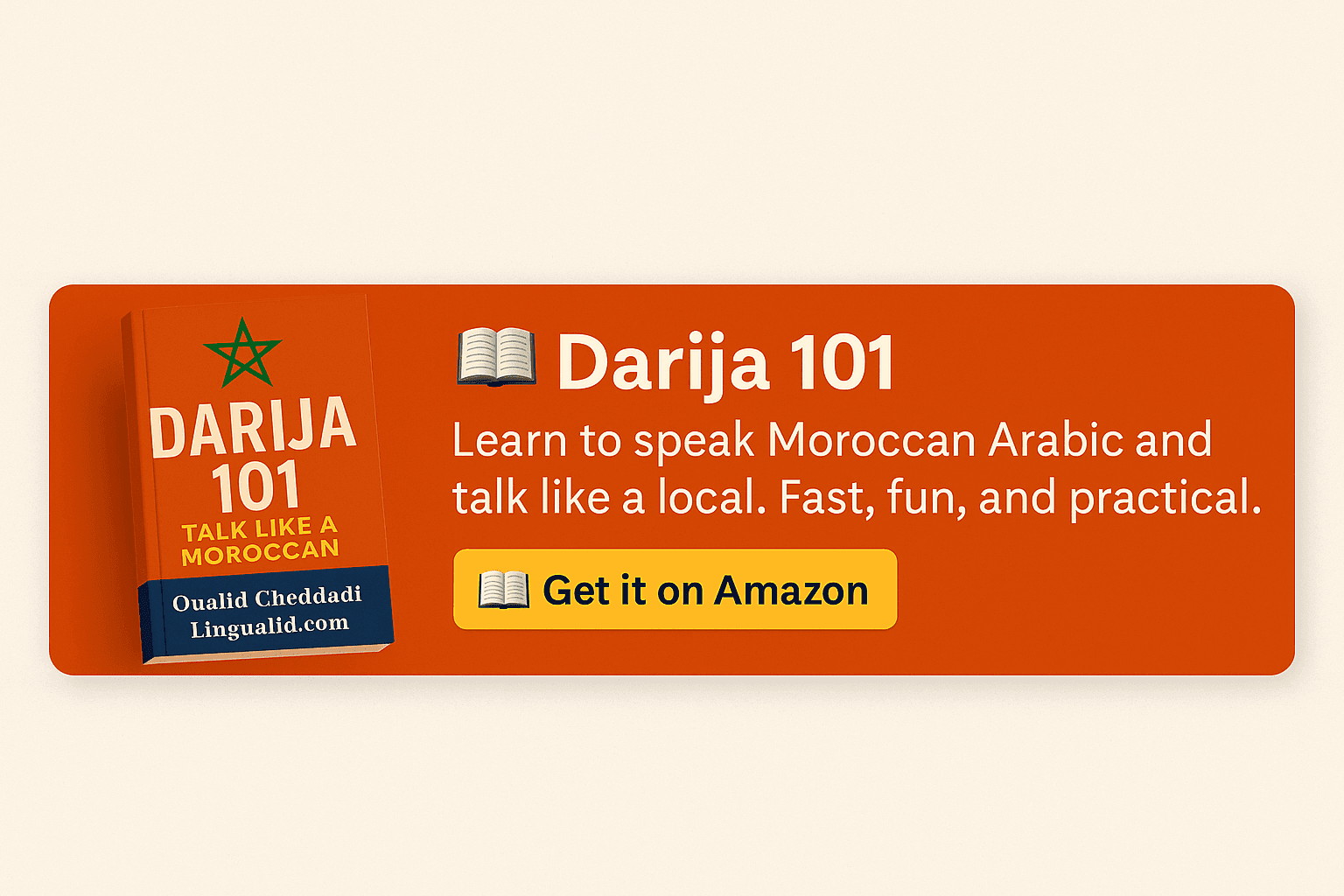
Oualid Cheddadi is the founder of Lingualid, a platform that inspires independent language learners worldwide, regardless of the language they are learning. The name “Lingualid” is derived from the Portuguese word for “language,” “língua,” and the last three letters of Oualid’s name, “Lid.”

